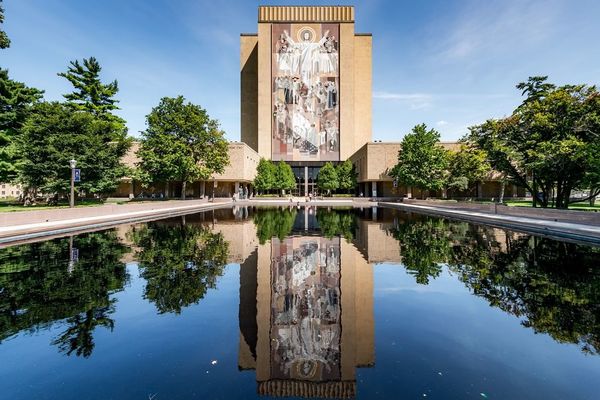Unseen by the Human Eye
For 25 years, senior university photographer Matt Cashore ’94 has delighted our readers with his photographs of campus and its people as well as Notre Dame ventures around the globe. With this photo essay, shot during the summer of 2017, Cashore used a camera converted to make photos of the infrared spectrum of light normally invisible to the human eye.
Infrared light is part of the electromagnetic spectrum, but its rays have longer wavelengths than visible light. While we cannot see infrared light, we feel it as heat. About half the energy that comes to Earth from the sun is infrared radiation, and heat-producers like flames, lamps, plants and humans emit infrared energy.
Making photos that capture the infrared spectrum, says Cashore, “can be scientifically useful for a variety of reasons, but the resulting look is simply fun from a creative standpoint, too.”
Cashore, who in 2016 was named photographer of the year by the University Photographers’ Association of America, adds, “Summer daytime is the least scenic time because the light is so harsh and the trees are thick and green and make inky black shadows. Infrared flips all that upside down. Suddenly I can see into the shadows, and the harsher the light the more brilliantly white the trees.”
For these pairs, Cashore stood in one place and took two photos — one with a regular camera and another with an infrared-equipped one. Use the sliders to see seven campus landmarks and their infrared twins.













